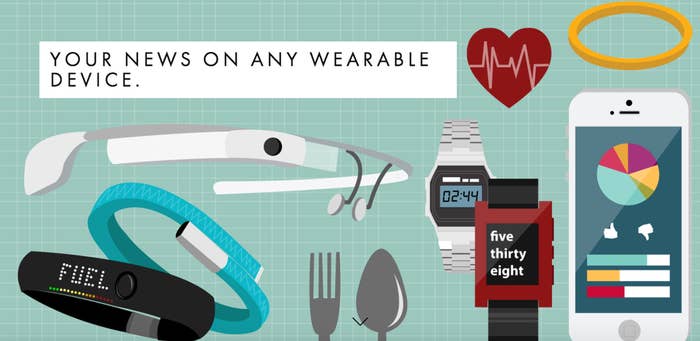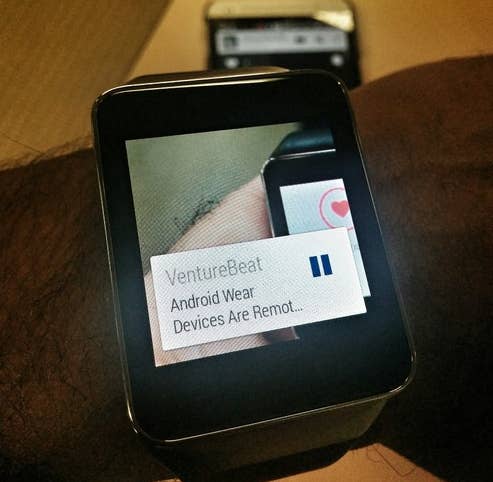
The "mobile-first" transformation for news organizations has been long and painful. Despite the fact that wearables haven't come close to breaking through to a mass consumer base, these same organizations are taking precautions so they don't get left behind by the next wave in tech. As expectations for an Apple iWatch mount (a research firm has predicted that 330 million smartwatches will be sold worldwide by 2018), news orgs are already planning for the ways they will move their content onto the wrists and foreheads of consumers.
Right now, breaking news alerts are the obvious newsroom use case for any kind of wearable tech. The New York Times and Wall Street Journal are already on Google Glass, but both are considered experimental endeavors by the outlets. At small media startups, like the news app Circa, plans for wearables are already in full swing. CEO and co-founder Matt Galligan told BuzzFeed that Circa already has a prototype in the works and plans to fully support Android Wear. "Our format already fits nicely in mobile devices, and with ideas like our followable stories, we can keep people informed while on the go in succinct chunks. Imagine breaking news alerts on your wrist — with a one-tap follow feature," he said.
The promise of such experimentation is catnip to people like NYU media professor Mitch Stephens, who fears that he'll become even more addicted to Twitter than he already is. "Things will become even more instantaneous. Now we're at up-to-the-minute news, but we're going to see things move to up to the second," he said.
Still, for all but a small group of journalists and early adopters, speed of delivery would seem to be in the category of diminishing returns. For a smartwatch news app to really succeed, it'll have to offer more promise than just faster push notifications. Umano, a startup that sends users audio files of popular articles read by voice actors, is betting on wearables delivering an interactive experience and adding context to news. Umano is already on Google Glass and works on Android Wear watches as well.

Antonio Zugaldia, the co-founder of D.C.-based wearable apps company Silica Labs and the creator of Wearably, told BuzzFeed he plans to release software that will allow publishers to push content seamlessly to any kind of wearable device. Wearably already has trial partnerships with Atlantic Media, NPR, and National Geographic. Zugaldia fears that media companies will repeat the mistake they made in the early days of early mobile and try to cram all of their content onto the wrist/face/etc.
"Just bringing the news to a wearable is not a good experience for users; we changed the design of content to make it way more visual," he said.
But one of the biggest promises of wearable devices — that is simultaneously a huge challenge — is giving a layer of context to news that hasn't been seen before. News on wearables isn't going to be about bringing you endless layers of content to take in, it's going to be about news that simplifies your life, or as Michael Maness, the Knight Foundation's vice president of journalism, puts it, "It's less about consumption and more about identification."
"The thing that I see with wearables is the ability to gather mass amounts of data from you and your environment. Increasingly, you're going to see news and information that is contextualized," said Maness.
Similarly, Zugaldia emphasized that news coming from wearables has to not only be extremely relevant to its users, but so contextually synced to the reader's life that it feels like a kind of magic.
"You have to know your users really well — not just on topic, but on context," he said. "If the user is running, you can send them alerts to a change in the weather. At home, sending an alert for rain is not so important, but it is for someone exercising outside."
Still, little of this matters until Apple — or a competitor — releases a wearable that breaks through to the mainstream.
In some ways, the excitement inside newsrooms and in wearble-focused startups highlights the stakes for the iWatch. Practicality be damned, the tech and media worlds are convinced that wearables will have their moment. They're making their bets and getting in position, meaning that if Apple fails, there's a lot more than Tim Cook's reputation on the line.
